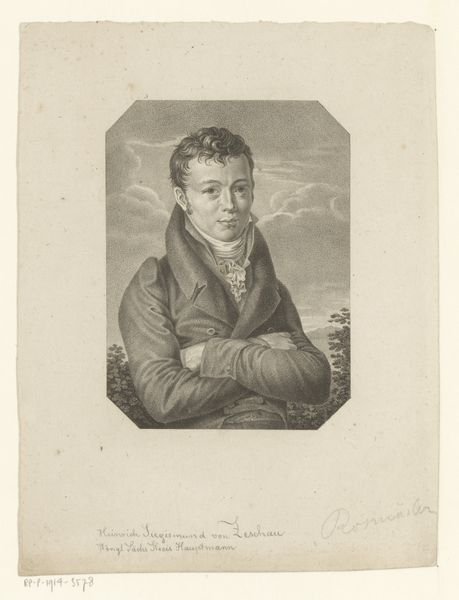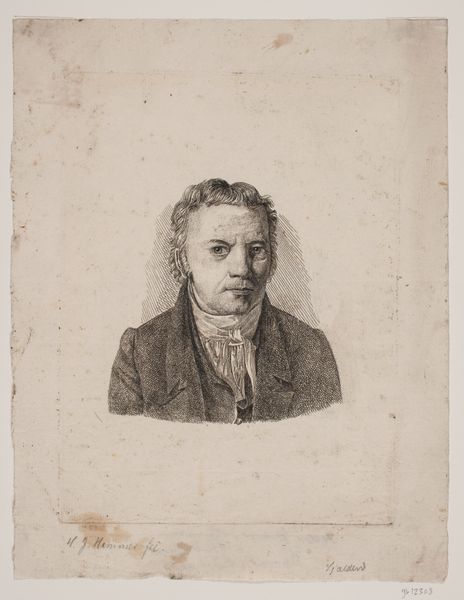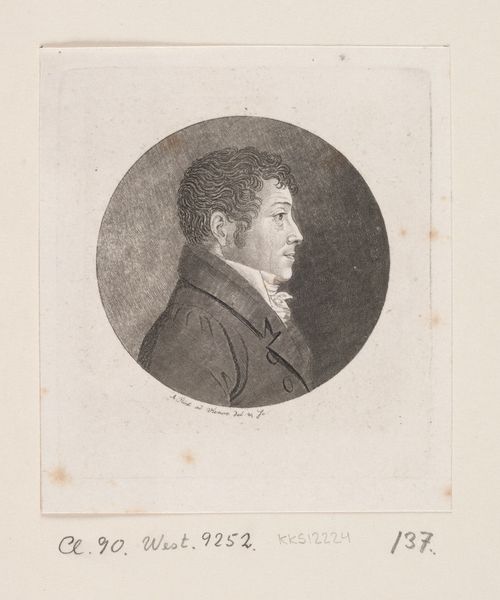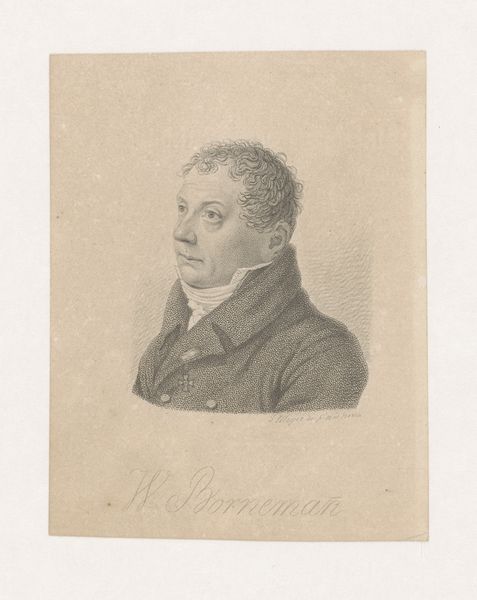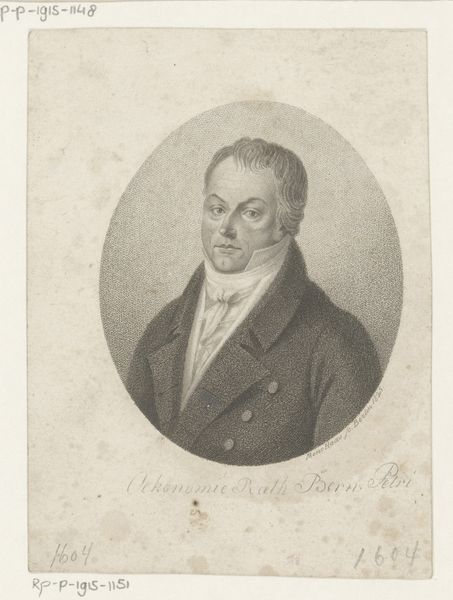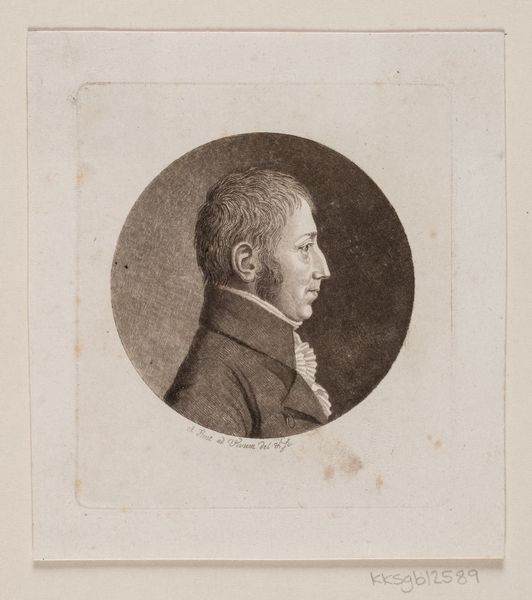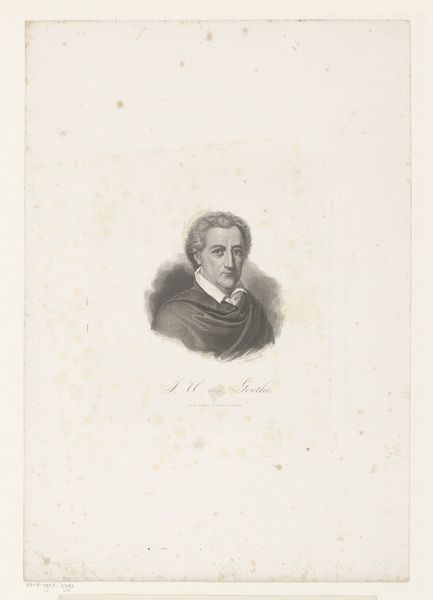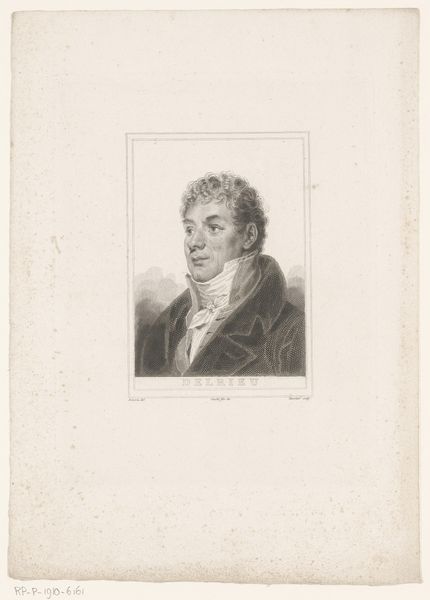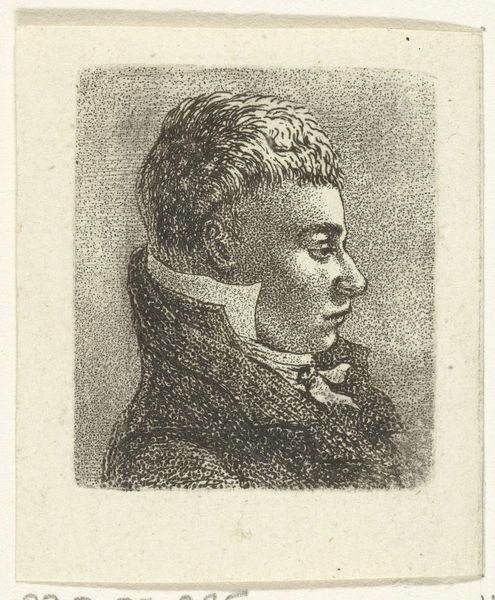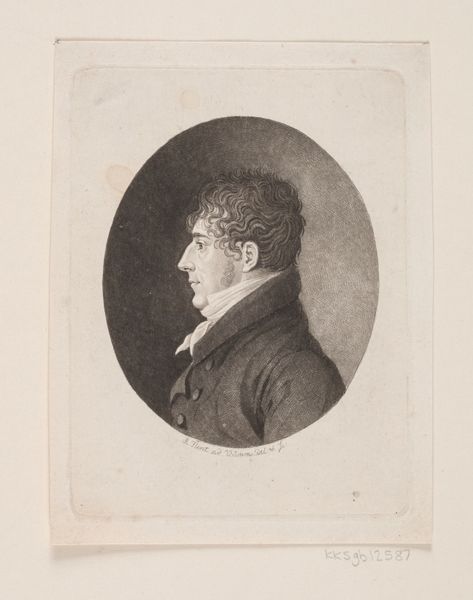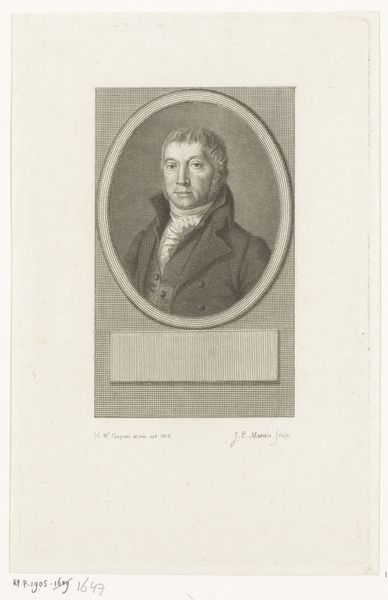
print, etching, engraving
#
portrait
#
pencil drawn
#
neoclacissism
#
light pencil work
# print
#
etching
#
pencil sketch
#
old engraving style
#
historical photography
#
pencil drawing
#
academic-art
#
engraving
Dimensions: height 204 mm, width 130 mm
Copyright: Rijks Museum: Open Domain
Editor: Here we have a portrait of Adam von Bartsch, an etching made by Heinrich Gustav Adolf Leybold, sometime between 1804 and 1842. It's quite austere, a man framed in an oval. The linework is so delicate. What captures your attention in this piece? Curator: Ah, yes! It’s as though time has settled on this print like dust, hasn't it? Look closely; it's not just a portrait, it's a whisper from a world obsessed with order, reason... neoclassicism at its most buttoned-up. I sense Leybold's own ambivalence—dutifully rendering Bartsch, yet subtly, almost invisibly, yearning to break free from such rigid forms. Editor: I see what you mean. It's almost…clinical? Did the subject's status affect how artists approached these portraits? Curator: Absolutely! Bartsch was a powerful figure in his own right, head of the print collection at the Albertina. I wonder if Leybold felt pressure to portray him in a certain, authoritative light, suppressing a potentially more vibrant interpretation? Notice how every line, every shadow is carefully considered. It almost lacks breath. What would happen if we scribbled a bit here, broke the oval, wouldn't it be fun? Editor: Perhaps. The precision is interesting, though. Is it purely Neoclassical, or is there something else at play here? Curator: That’s the beautiful paradox, isn't it? This precision hints at a deeper longing. What did it mean to portray a person, especially one of influence, in such a calculated era? Did the subject consent to this picture of himself? We may not have the answers now, but it's fascinating to reflect. Editor: So, this isn't just a likeness, but also a time capsule, a glimpse into the dynamics between artist, subject, and the artistic conventions of the time. Thank you for shedding a new light on it. Curator: Absolutely! Now I cannot unsee this; and I am already curious to ponder on a different piece of work, this way of thinking. It’s not just about seeing but about seeing through the surface.
Comments
No comments
Be the first to comment and join the conversation on the ultimate creative platform.
